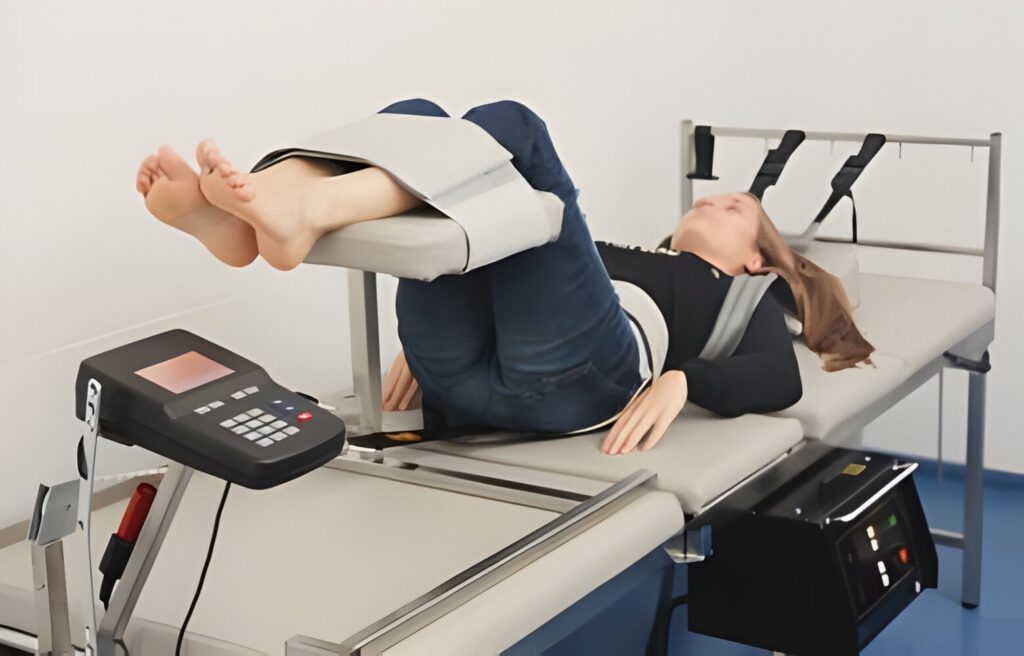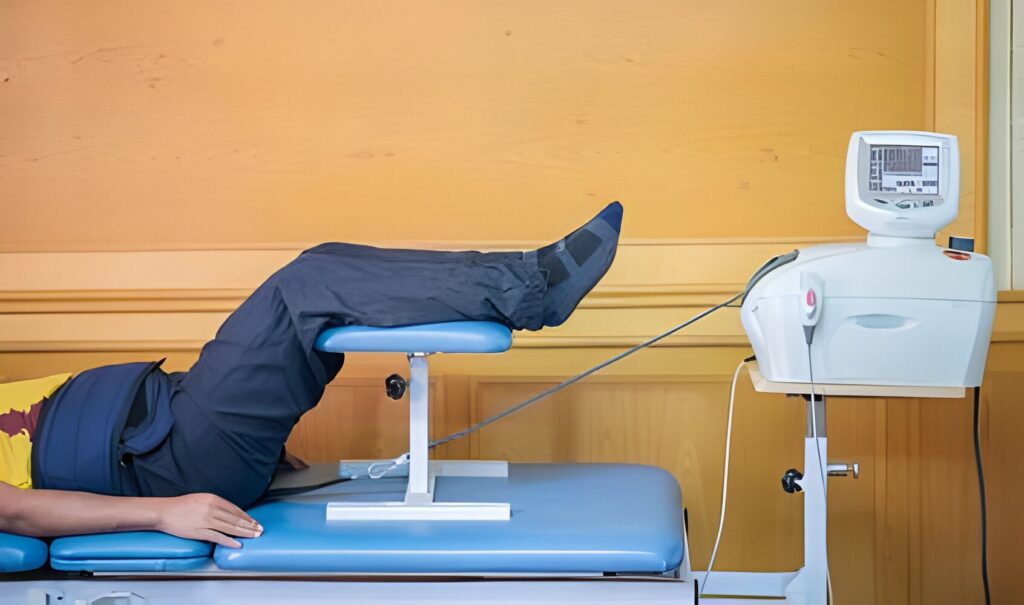Spinal decompression therapy is a non-invasive, non-surgical treatment that can treat large sections of the spine simultaneously.
It increases circulation, realigns out-of-place discs, and encourages healing to the whole spinal area, providing relief to people with chronic back pain.
Here are five things every patient searching for chronic back pain relief should know about spinal decompression therapy.

1. How Does Spinal Decompression Therapy Work For Healing The Back Pain?
Spinal decompression therapy gently stretches the spine, creating negative pressure around the herniated disc. This reduces inflammation, improves blood flow, rehydrates the disc, and reduces back pain.
The treatment is customised to the patient’s needs and is safe with minimal side effects. Typically, patients receive three or four sessions weekly for several weeks, tapering down as the pain reduces.
2. What Types Of Conditions Can Be Treated With Spinal Decompression Therapy?
Spinal decompression therapy is a non-invasive treatment for spinal disc, nerve root, and facet joint injuries and conditions.
● Chronic low back pain
● Intervertebral joint dysfunction
● Lumbar facet syndrome
● Spondylolisthesis
● Muscle strain
● Whiplash injuries
● Arthritis
● Spinal stenosis
● Herniated discs
● Sciatica
● Lumbar radiculopathy
While conditions such as arthritis cannot be completely cured or reversed, spinal decompression therapy can help manage symptoms.
3. Treating Chronic Back Pain With Spinal Decompression Therapy
Chronic back pain can be caused by an injury to the spinal structure, which is often left undiagnosed or untreated. In such cases, receiving appropriate treatment can help the body heal and relieve pain completely.
When patients receive spinal decompression promptly, their chances of healing completely from their acute injury are greatly improved, thus preventing the pain from becoming chronic.
Spinal decompression for chronic pain also effectively relieves pain and stiffness caused by degenerative conditions like arthritis or degenerative disc disease, thereby improving the patient’s quality of life.
The treatment reduces inflammation, rehydrates discs, and enhances circulation to low-circulation areas within joints and the disc space.
While these conditions cannot be cured, some healing and inflammation mitigation is better than none. Treatment significantly improves pain, stiffness, and range of motion, even though the conditions cannot be cured.
4. Spinal Decompression Therapy Can Treat Failed Back Surgeries
Spinal decompression therapy can help relieve back pain that persists after surgery. However, it might not be the right one for everyone.
Failed back surgeries may happen due to various reasons, such as operating on the wrong section of the spine or not addressing the primary cause of the pain.
Spinal decompression therapy can provide relief, even as a last resort, as it is a holistic treatment that can address problems that surgery might not be able to see.
5. The Results Of Spinal Decompression Are Long-Lasting
According to studies, the outcomes of spinal decompression therapy are long-lasting, even for patients with chronic spine conditions.
Some patients with degenerative conditions may opt for “booster” sessions once a month or a few times a year. It’s undoubtedly helpful for long-term pain management.

Final Thoughts
Spinal decompression therapy is a noninvasive back pain treatment that involves stretching the spine, reducing inflammation, improving blood flow, and rehydrating discs. It treats various conditions, such as herniated discs and arthritis, and early intervention can prevent acute injuries from progressing into chronic pain.
It also serves as a viable option for those who have experienced failed back surgeries. The long-lasting results of this therapy make it an effective pain management solution for individuals seeking non-invasive, long-term relief from back pain.

